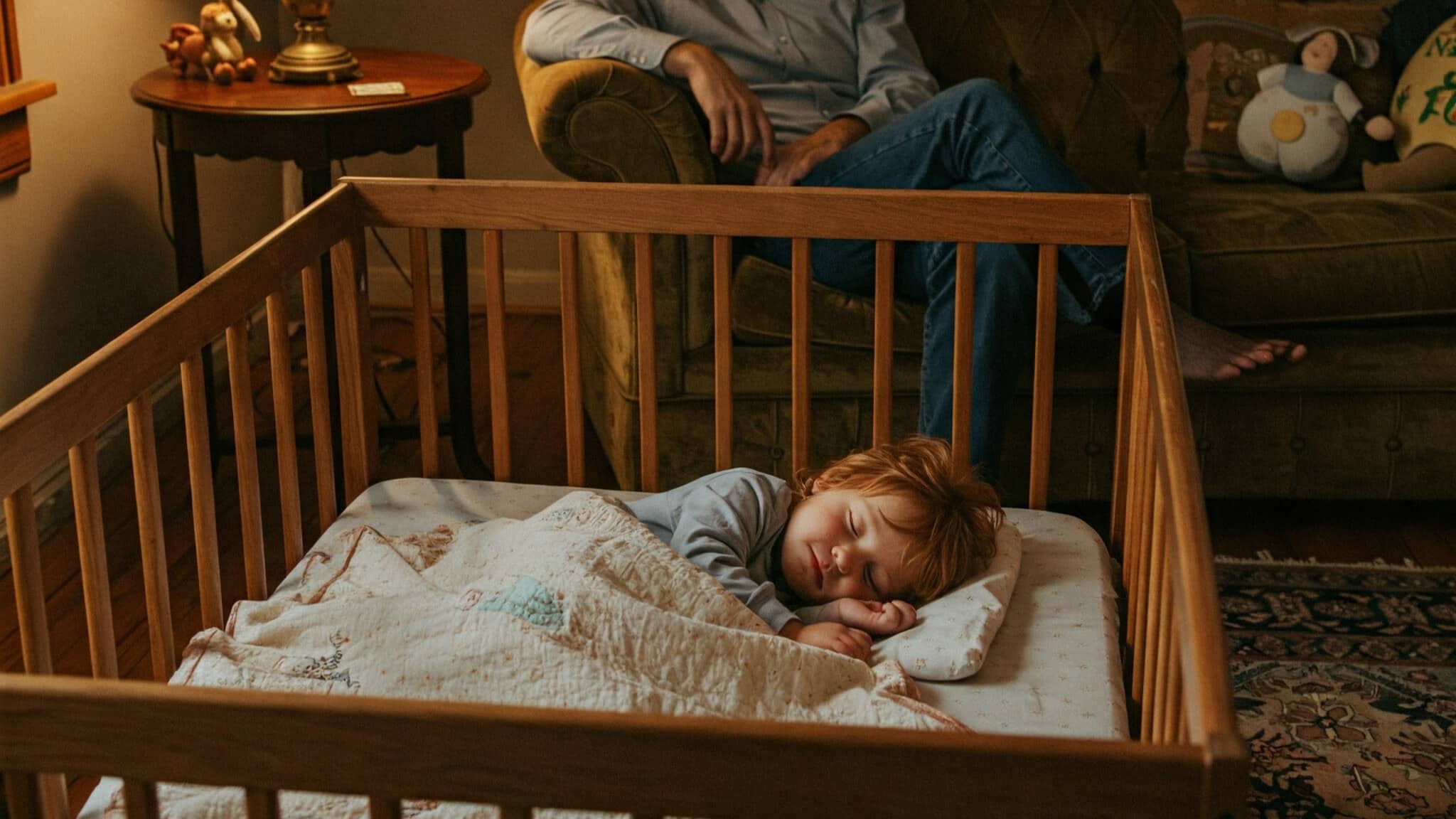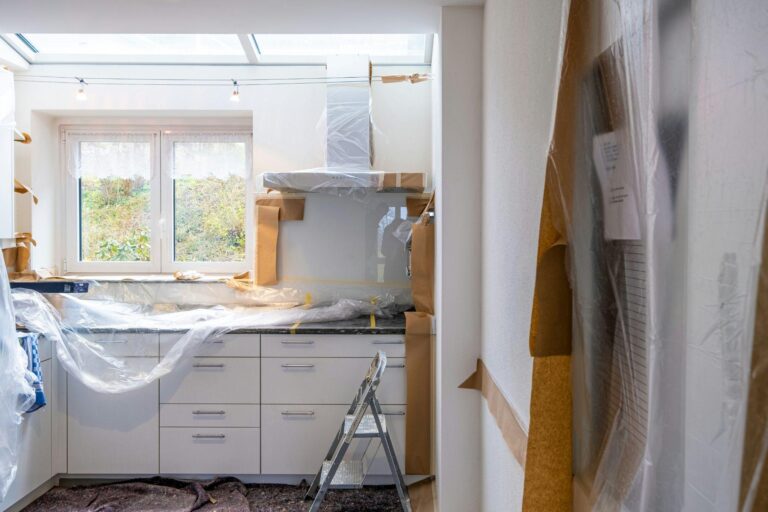Getting babies to sleep through the night remains a top concern for many parents.
The struggle is real, constant waking, tears, and parents who feel worn out from a lack of sleep. But what if a simple approach could help your child sleep better without causing stress?
The Chair Method sleep training provides parents with a gentle yet effective way to help babies learn to fall asleep independently.
This blog will guide you through the Chair Method sleep training step by step, helping your family achieve peaceful nights and better days.
What Exactly is Chair Method Sleep Training?

When parents discuss sleep training, the Chair Method stands out as a middle-of-the-road option. This method allows parents to stay close while helping their child learn to sleep independently.
In the Chair Method, a parent sits on a chair right next to the child’s bed to offer comfort as the child falls asleep. Each night, the parent moves the chair a bit farther from the bed. After about two weeks, the parent sits outside the door until the child no longer needs this help to fall asleep.
This method works well for parents who want to be present while also helping their child develop good sleep habits. It’s less sudden than other sleep training options, but still helps children learn to self-soothe.
The Chair Method helps parents and children build trust while working toward the primary goal: a child who can fall asleep without assistance and stay asleep throughout the night.
Executing the Chair Method Properly
Implementing the Chair Method requires a clear plan and consistent daily effort. The steps may seem simple, but how you carry them out matters a great deal.
Parents who follow the method closely often see better results than those who change the steps too much.
Step 1: Set Up a Calm Bedtime Routine
Begin each night with a simple and calming routine. This could be a warm bath, reading a favorite story, or listening to soft music. Keeping the routine the same every night helps your child know that bedtime is coming.
A familiar routine helps your child feel safe and relaxed, which is crucial for effective sleep training. The goal is to help your child wind down and prepare for sleep peacefully.
Step 2: Place Your Child in Bed While Still Awake
After the bedtime routine, put your child in their crib or bed while they are sleepy but still awake. This step helps your child learn to fall asleep independently in their own sleep space. If you always rock or feed your child until they are fully asleep, they may struggle to settle themselves later.
By putting them down while they are drowsy, you give them the chance to practice falling asleep without your help.
Step 3: Sit in the Chair Close to the Bed
Sit quietly in a chair right next to your child’s crib or bed. Your presence lets your child know you are nearby and gives them comfort. Try to stay calm and quiet, offering only gentle words or a soft touch if needed.
Avoid picking up your child or making excessive eye contact. The idea is to be there for support, but not to help them fall asleep.
This step helps build your child’s confidence in settling on their own.
Step 4: Move the Chair Further Away Over Time
Every few nights, move your chair a little farther from your child’s bed. Start by sitting right next to the crib, then move to the middle of the room, and later, closer to the door.
This gradual change helps your child become accustomed to falling asleep with less assistance from you. By moving slowly, you give your child time to adjust and feel comfortable as you become less involved at bedtime.
Step 5: Be Patient and Consistent Each Night
It’s normal for your child to fuss or need extra comfort at first.
Stay patient and stick to the plan, even if it takes a little while. Try to keep your responses calm and consistent each night. If your child wakes up during the night, return to your chair and follow the same steps.
With time and practice, your child will learn to fall asleep independently, making bedtime easier for everyone.
Pros and Cons of the Chair Method Sleep Training
| Pros | Cons |
|---|---|
| Allows parents to stay in the room | Takes longer than some other methods |
| Fewer tears than cry-it-out methods | It can be hard to stick with |
| Helps build trust between parent and child | May cause more crying at first |
| A gradual process makes it easier for many babies | Some babies get more upset seeing their parents but not being picked up |
| Parents can offer verbal comfort | Parents may feel tired sitting in the room each night |
| The child learns to self-soothe over time | The process can take 2-3 weeks to complete |
| Works for babies who need some security | Not ideal for parents who need quick results |
| Can be used with older babies and toddlers | May confuse some children |
| Gives parents a middle-ground option | Some kids may stand up or try to follow their parents |
| Helps teach good sleep habits slowly | Requires lots of patience |
Tips for Success: Making the Chair Method Work for Your Family

The Chair Method is most effective when you follow a few helpful tips. Sleep training requires time and care, but taking small steps can make a significant difference. The right setup and approach can help both you and your baby adjust to this new sleep method with less stress.
- Start when you have at least two weeks without major plans or trips
- Choose a good bedtime when your baby shows signs of being tired
- Create a calm, short bedtime routine that signals sleep time
- Make sure the room is dark, quiet, and at a good sleeping temperature
- Be firm but loving in your approach each night
- Stay in the chair even if your baby cries or fusses
- Avoid eye contact, as this may make your baby more alert
- Keep a sleep log to track progress and changes
- Stick to the plan of moving the chair a bit each night
Chair Method vs. Other Techniques
| Method | Age to Start | Parent Presence | Duration | Crying Level | Main Approach |
|---|---|---|---|---|---|
| Chair Method | 6+ months | Gradual withdrawal | 1-3 weeks | Low to moderate | Parent sits beside crib, gradually moving further away each night until eventually leaving the room |
| Cry It Out (Extinction) | 4-6+ months | Minimal | 3-7 days | High initially, decreases | Parents put the baby down awake and leave, returning only at designated feeding times or in the morning |
| Ferber Method (Graduated Extinction) | 4-6+ months | Intermittent | 1-2 weeks | Moderate, but with comfort intervals | Parents check on the baby at gradually increasing timed intervals to provide brief verbal reassurance without picking up |
| Pick Up/Put Down | 4+ months | Consistent | 2-3+ weeks | Low to moderate | Parents pick up the baby when crying, put down when calm, repeating until the baby falls asleep |
| Bedtime Fading | Any age | Consistent | 1-2 weeks | Minimal | Parents identify the baby’s natural sleep time and gradually adjust to the desired bedtime while maintaining a consistent bedtime routine. |
Wrapping It up
Sleep training requires time and focus, but the Chair Method provides a gentle approach to teaching good sleep habits.
This method allows you to stay with your baby while helping them learn how to fall asleep independently.
What makes the Chair Method effective is finding what works for your family. Some babies respond immediately, while others require more time to adjust to their surroundings. The key is to stay steady with your plan.
Remember that no perfect sleep training method exists – just the right one for your family. If the Chair Method feels good to you, give it a try for at least two weeks.
Ready to help your baby sleep better?
Start tonight with a simple chair next to the crib, and take small steps toward better sleep for everyone.


















